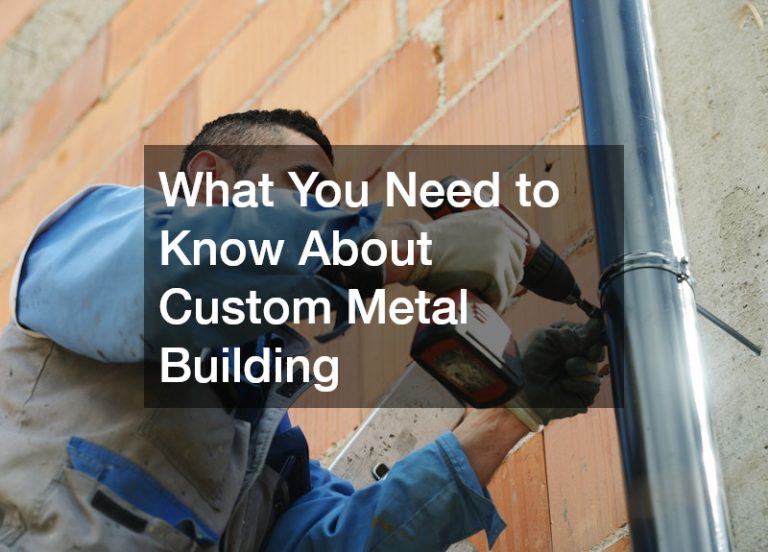Discover the essential aspects of custom metal buildings, which have gained popularity due to their durability, versatility, and cost-effectiveness. In this article, we explore the most common inquiries people have, ensuring you have all the information needed to make an informed decision about custom metal construction. From understanding building types to financial planning and environmental benefits, this guide is tailored to equip you with comprehensive knowledge.
1. Considering Factors in Custom Metal Building
Understand the key factors that influence your choice of custom metal building, such as purpose, size, and location. It’s important to evaluate what you intend to use the building for, whether it’s for residential, commercial, or industrial purposes. Additionally, consider the local climate and the specific conditions of your site, as these can affect your building choices.
Another critical factor is compliance with local zoning laws and building codes, which can dictate the size and type of structure permissible in certain areas. This requires thorough research or consultation with a local expert to ensure all regulations are met. Moreover, future expansion plans should be kept in mind, as metal buildings can be designed to accommodate growth.
Finally, consider how the custom metal building will complement your existing infrastructure. Think about how ease of access, energy efficiency features, and aesthetic coherence with other structures can enhance the building’s functionality. Custom metal buildings offer a significant degree of flexibility, making them ideal for various applications.
2. Comparing Various Metal Building Types
Explore the differences between popular metal building types like steel frames, pole barns, and Quonset huts. Steel frame buildings are renowned for their strength and are a popular choice when large, open spaces are needed. These might be suitable for warehouses or factories where column-free interiors are advantageous.
Pole barns, meanwhile, offer a more economical construction method with wood and metal roofing combined, which can be ideal for agricultural purposes. This type of building provides flexibility in design and can be constructed quickly, often with fewer materials. On the other hand, their durability might not match the robustness of full-scale steel structures.
Quonset huts, known for their distinctive semicircular shape, are highly versatile and easy to assemble. They are also exceptionally durable due to their aerodynamic shape which makes them resistant to wind and snow. Depending on your specific needs, Quonset huts may offer the ideal combination of affordability and resilience.
3. Budgeting for the Cost of Your Project

Learn how to effectively budget for a custom metal building by understanding material, labor, and additional costs. The cost of materials can vary significantly based on the type of metal used and specific customizations. For instance, galvanized steel is often more expensive but offers greater rust resistance.
Labor costs should also be factored in, as more complex designs may require skilled labor and longer construction times. It’s essential to get detailed quotes from various contractors to compare potential costs effectively. Additionally, the distance of the construction site from supply sources could affect transportation and delivery costs.
Consider additional costs such as insulation, windows, and other finishes that can increase both the initial expense and the long-term energy efficiency of the building. Proper budgeting should also include a contingency fund for unforeseen expenses. This careful financial planning ensures that you remain within budget without compromising on quality or design.
4. Understanding the Durability of Metal Buildings
Discover how the inherent strength and resistance to weather conditions contribute to the long life of metal buildings. Custom metal buildings are designed to withstand extreme weather events like hurricanes, earthquakes, and heavy snow loads. Their non-combustible nature also reduces risks related to fire damage, adding to their longevity.
The durability of metal structures means lower maintenance requirements over time, saving owners significant costs on repairs and replacements. Metal’s resistance to pests such as termites and rot, which often plague wooden structures, further extends these buildings’ lifespan. Additionally, advances in protective coatings and modern construction practices continue to enhance the durability of metal buildings.
This long-term resilience makes metal buildings a wise investment, particularly when considering the cost of ownership over several decades. Unlike traditional construction materials, metal buildings do not degrade significantly over time. Therefore, they maintain their aesthetic appeal and functional integrity much longer, providing peace of mind to property owners.
Custom metal buildings offer a blend of reliability, adaptability, and sustainability, making them a viable choice for various applications. Armed with the knowledge from this article, you are better equipped to explore the possibilities and make decisions tailored to your specific requirements. Whether for personal, commercial, or industrial purposes, these structures provide enduring value and versatility for discerning buyers.
